Remote Sensing of Dispersed Oil Pollution in the Ocean-The Role of Chlorophyll Concentration
- PMID: 34067967
- PMCID: PMC8152263
- DOI: 10.3390/s21103387
Remote Sensing of Dispersed Oil Pollution in the Ocean-The Role of Chlorophyll Concentration
Abstract
In the contrary to surface oil slicks, dispersed oil pollution is not yet detected or monitored on regular basis. The possible range of changes of the local optical properties of seawater caused by the occurrence of dispersed oil, as well as the dependencies of changes on various physical and environmental factors, can be estimated using simulation techniques. Two models were combined to examine the influence of oceanic water type on the visibility of dispersed oil: the Monte Carlo radiative transfer model and the Lorenz-Mie model for spherical oil droplets suspended in seawater. Remote sensing reflectance, Rrs, was compared for natural ocean water models representing oligotrophic, mesotrophic and eutrophic environments (characterized by chlorophyll-a concentrations of 0.1, 1 and 10 mg/m3, respectively) and polluted by three different kinds of oils: biodiesel, lubricant oil and crude oil. We found out that dispersed oil usually increases Rrs values for all types of seawater, with the highest effect for the oligotrophic ocean. In the clearest studied waters, the absolute values of Rrs increased 2-6 times after simulated dispersed oil pollution, while Rrs band ratios routinely applied in bio-optical models decreased up to 80%. The color index, CI, was nearly double reduced by dispersed biodiesel BD and lubricant oil CL, but more than doubled by crude oil FL.
Keywords: chlorophyll-a; color index; dispersed oil detection; oil pollution; radiative transfer; remote sensing reflectance.
Conflict of interest statement
The authors declare no conflict of interest. The funders had no role in the design of the study; in the collection, analyses, or interpretation of data; in the writing of the manuscript, or in the decision to publish the results.
Figures
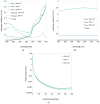
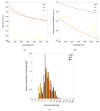



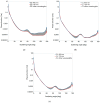
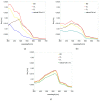
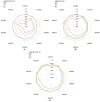
Similar articles
-
Influence of Dispersed Oil on the Remote Sensing Reflectance-Field Experiment in the Baltic Sea.Sensors (Basel). 2021 Aug 25;21(17):5733. doi: 10.3390/s21175733. Sensors (Basel). 2021. PMID: 34502624 Free PMC article.
-
The effect of dispersed Petrobaltic oil droplet size on photosynthetically active radiation in marine environment.Environ Sci Pollut Res Int. 2016 Apr;23(7):6506-16. doi: 10.1007/s11356-015-5886-4. Epub 2015 Dec 3. Environ Sci Pollut Res Int. 2016. PMID: 26635218
-
Modeling ocean surface chlorophyll-a concentration from ocean color remote sensing reflectance in global waters using machine learning.Sci Total Environ. 2022 Oct 20;844:157191. doi: 10.1016/j.scitotenv.2022.157191. Epub 2022 Jul 8. Sci Total Environ. 2022. PMID: 35810889
-
Ocean water quality monitoring using remote sensing techniques: A review.Mar Environ Res. 2022 Sep;180:105701. doi: 10.1016/j.marenvres.2022.105701. Epub 2022 Aug 2. Mar Environ Res. 2022. PMID: 35939895 Review.
-
Biological and remote sensing perspectives of pigmentation in coral reef organisms.Adv Mar Biol. 2002;43:277-317. doi: 10.1016/s0065-2881(02)43006-4. Adv Mar Biol. 2002. PMID: 12154614 Review.
Cited by
-
Fluorometric Detection of Oil Traces in a Sea Water Column.Sensors (Basel). 2022 Mar 5;22(5):2039. doi: 10.3390/s22052039. Sensors (Basel). 2022. PMID: 35271186 Free PMC article.
-
Influence of Dispersed Oil on the Remote Sensing Reflectance-Field Experiment in the Baltic Sea.Sensors (Basel). 2021 Aug 25;21(17):5733. doi: 10.3390/s21175733. Sensors (Basel). 2021. PMID: 34502624 Free PMC article.
References
-
- Kostianoy A.G., Lavrova O.Y., Mityagina M.I., Solovyov D.M., Lebedev S.A. Satellite Monitoring of Oil Pollution in the Southeastern Baltic Sea. In: Kostianoy A.G., Lavrova O.Y., editors. Oil Pollution in the Baltic Sea. Volume 27. Springer; Berlin/Heidelberg, Germany: 2014. pp. 125–152. - DOI
-
- Muttin F., Campbell R. Oil Spill Containment in Open Areas: Four Atlantic and Mediterranean Experiments. In: Muttin F., editor. Oil Spill Studies: Healing the Ocean, Biomarking and the Law. Elsevier Ltd.; Amsterdam, The Netherlands: 2018. pp. 19–43. - DOI
MeSH terms
Substances
Grants and funding
LinkOut - more resources
Full Text Sources
Medical

